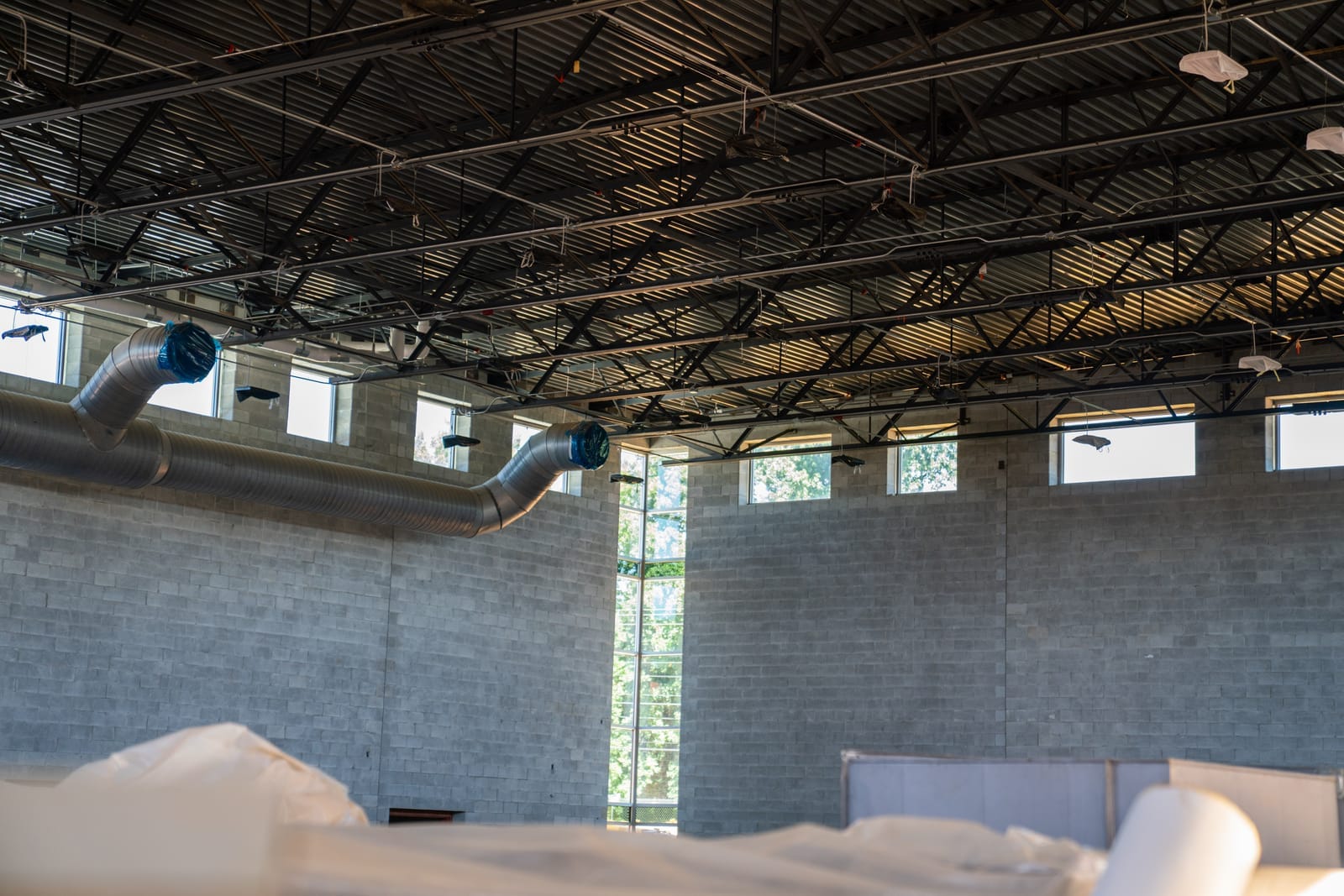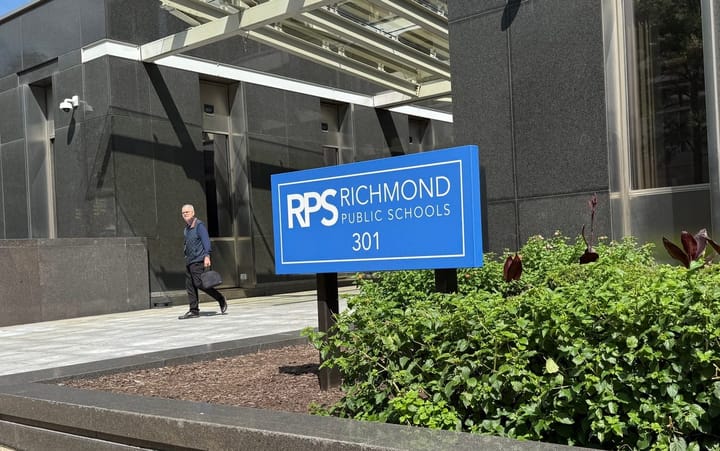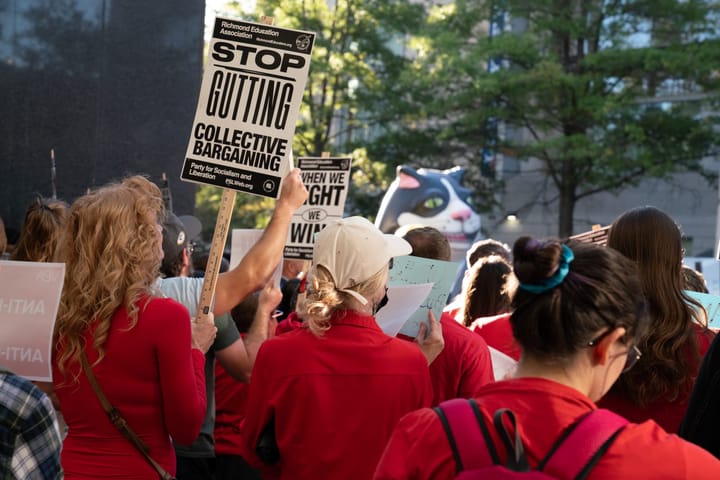
RPS resumes work on a master facility plan as needs continue to grow
Richmond Public Schools officials are picking back up work to outline their major upcoming projects for the next 10 years.
Patrick Herrel, the division’s new chief operating officer, presented the Richmond School Board with a schedule outlining the development of the division’s 10-year master facility plan at this month’s general Board meeting.
The plan is expected to be created over the next year in four phases that will heavily include community input, Herrel said. He wants it to balance the need to build new facilities, maintain existing ones and respond to demographic shifts that will lead to changing enrollment numbers.
Under a plan set in place by former Mayor Levar Stoney, RPS will receive lump-sum payments of $212.2 million in 2029 and $237.8 million in 2034 to be used for school construction.
“I mean, $200 million, given how expensive a single building can be to build, can go very, very quickly. And we need to make disciplined and smart decisions about when does it make sense to address deferred maintenance versus when does it make sense to build new?” Herrel told The Richmonder in an interview.
The master plan would take the place of a traditional five-year capital improvement plan, something that is required by state law.
“Given the length of a construction project of this size, ten years is generally considered better from a planning perspective: A single school can easily be three years of a five-year plan,” RPS spokesperson Alyssa Schwenk wrote in an email.
The division does propose yearly smaller capital improvement budgets – for things like roofing, HVAC and windows. This year’s budget for those projects is $2.5 million. She said that the division’s planning work was impacted by multiple events, including the COVID-19 pandemic, Fox Elementary fire and changes in governance, but the goal has always been to resume long-term planning.
At a September joint meeting between Richmond Public Schools and Richmond-representing members of the General Assembly, Sen. Lamont Bagby told RPS officials he has requested a capital improvement plan multiple times, and having the plan would help him and other representatives know what the division’s exact infrastructure needs are when advocating on their behalf.
The plan will not be ready before the next General Assembly session, which begins in January.
“What we do know from the last facilities condition assessment and many conversations with our delegation and City Council is that Richmond Public Schools has decades of deferred maintenance and [is in need of] millions of dollars,” Schwenk said.
The 10-year plan was originally a task that began under Dana Fox, the former COO. Fox left the district in February for a job in Hanover County. Since her leave, the advancing of the plan appeared to be on pause until Herrel joined the district in August. Schwenk said long-term work like the 10-year master facilities plan needs strong leadership.
“That is why you want to wait and make sure you’ve got not just a chief in place, but the right chief in place,” she said.
Under Fox, the administration aimed to present a draft of the plan to the Board in fall 2025. A final plan is now expected to be presented at the beginning of the next school year.
The roadmap for the division’s school construction is part of the district’s Dreams4RPS five-year strategic plan and is intended to help RPS center resources on a prioritized list of the expansion and development of current and new facilities. That list would be determined by a 2024 detailed assessment of RPS buildings, which showed that schools needed $36 million in immediate repairs for 2025.

Projects currently in motion
So far, the division has three major projects underway.
Woodville Elementary was one of the schools officials noted as needing immediate attention, leading to the division’s decision to construct a new building for the school. Herrel told Board members that while a design of the school and construction costs – totaling $53 million – are now available, completing the project will be difficult because there is not enough money to complete the project in full. Superintendent Jason Kamras said the division so far has $12 million available from a state grant, but federal grants the division applied for have been cancelled or rescinded.
Kamras said the division may need to identify additional funding from the city, and can get funding sooner if the division requests the city pay RPS for surplused properties before the city sells them. He also suggested that potentially merging Woodville and Fairfield Elementary schools could help convince the city to bring funding sooner.
“I know there’s a lot of strong feelings about that pro and con, but the reality is if we were to only build the Woodville site, the Fairfield site would not realistically be developed for another 15 to 20 years just given the scarcity of resources,” he said.
The division also aims to relocate its Richmond Technical Center to Maury St. on Southside. Herrel said that outside firms have conducted a feasibility study to see what the site could look like. Because it is a high school, Herrel added, costs are higher – nearly $130 million – but are also tentative.
Construction is also ongoing for a new Richmond High School for the Arts, which officials expect to be open for students and staff in late 2026. The project costs the division $140 million.
The Richmonder is powered by your donations. For just $9.99 a month, you can join the 1,200+ donors who are keeping quality local news alive in Richmond.
How the facility plan will come together
In an effort to effectively engage the community, Herrel said the first phase will consist of town halls between the division and the public where officials can explain how capital improvement works, how much money the division gets for school construction and the financial impacts of deferred maintenance.
“What we have seen in other school systems across the country is these sorts of community involved processes are most successful when you start by helping the community understand the sandbox that we have to play in,” Herrel said.
The division would then dive into its enrollment trends and population growth in the city. The district expects increased density in Richmond, as part of the city’s overhaul of its zoning code – a process known as code refresh. Neighborhoods on Southside have already seen many new housing developments for families, in turn leading to schools facing overcrowding, as they have had to use trailers to accommodate more students.
That phase will help the division understand where schools may need to be built or expanded due to increased population and other places where the district can be nimble.
The third phase would involve looking at the 2024 facilities assessment and the current state of Richmond schools to determine what projects should be prioritized. This would include feedback from a capital improvement committee, a group created under Fox which began accepting applications from the public last year. The committee received 31 applicants, Herrel told Board members at an October Facilities and Vacant Properties Committee meeting, but it never formed.
Some Board members appeared unaware about the newly formed group’s existence when it was brought to their attention at a committee meeting in September, and were concerned about who would serve on it.
“I really want to make sure that staff, families, students – the people who actually live, use, and are in the buildings all the time, that those are the people who really have a lot to say,” said Ali Faruk (3rd District) “To be honest, I don't want a lot of representation from random people that just happened to live here.”
Some other board members, like Matthew Percival (1st District), requested that it also include experts familiar with facilities at the meeting.
Herrel told The Richmonder that administrators had not asked for many details about applicants when they first applied.
“I do not know, of the folks that volunteered, if that group is both representative of our community and has the sort of expertise that we need to be an external validator of the direction that we are headed,” he told The Richmonder.
He said he plans to reopen the committee while ensuring that the group is representative of Richmond, can speak to the subject matter and can still be inclusive of individuals who did originally apply either through the committee or community forums.
After receiving expert and stakeholder input, the administration will then provide three options for how to approach the 10-year master facility plan before receiving feedback and adoption from the Board.
Contact Reporter Victoria A. Ifatusin at vifatusin@richmonder.org






